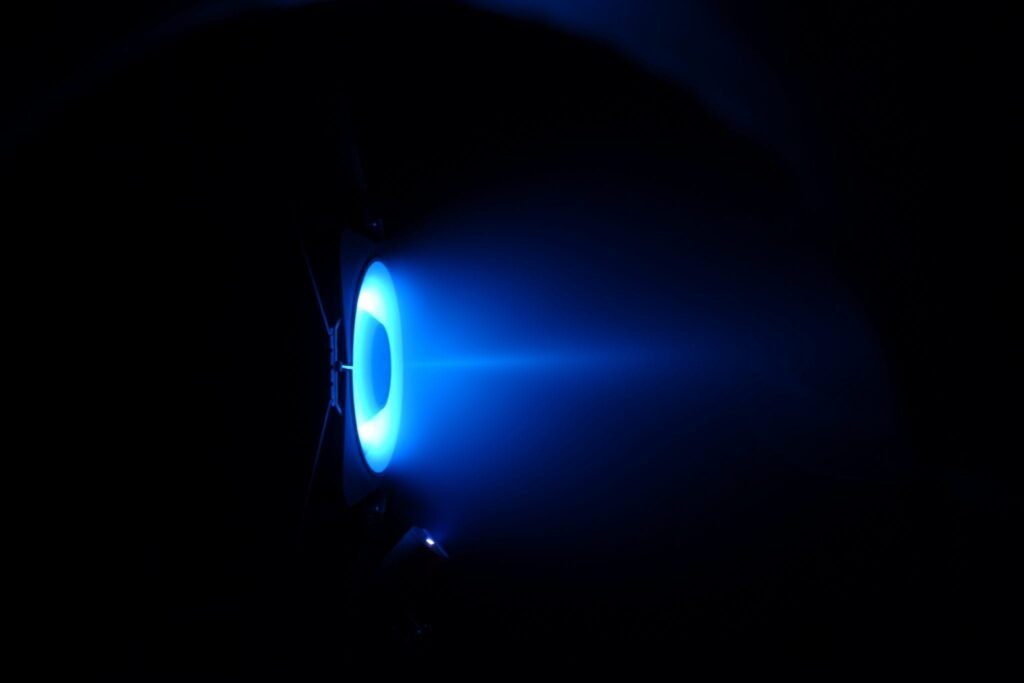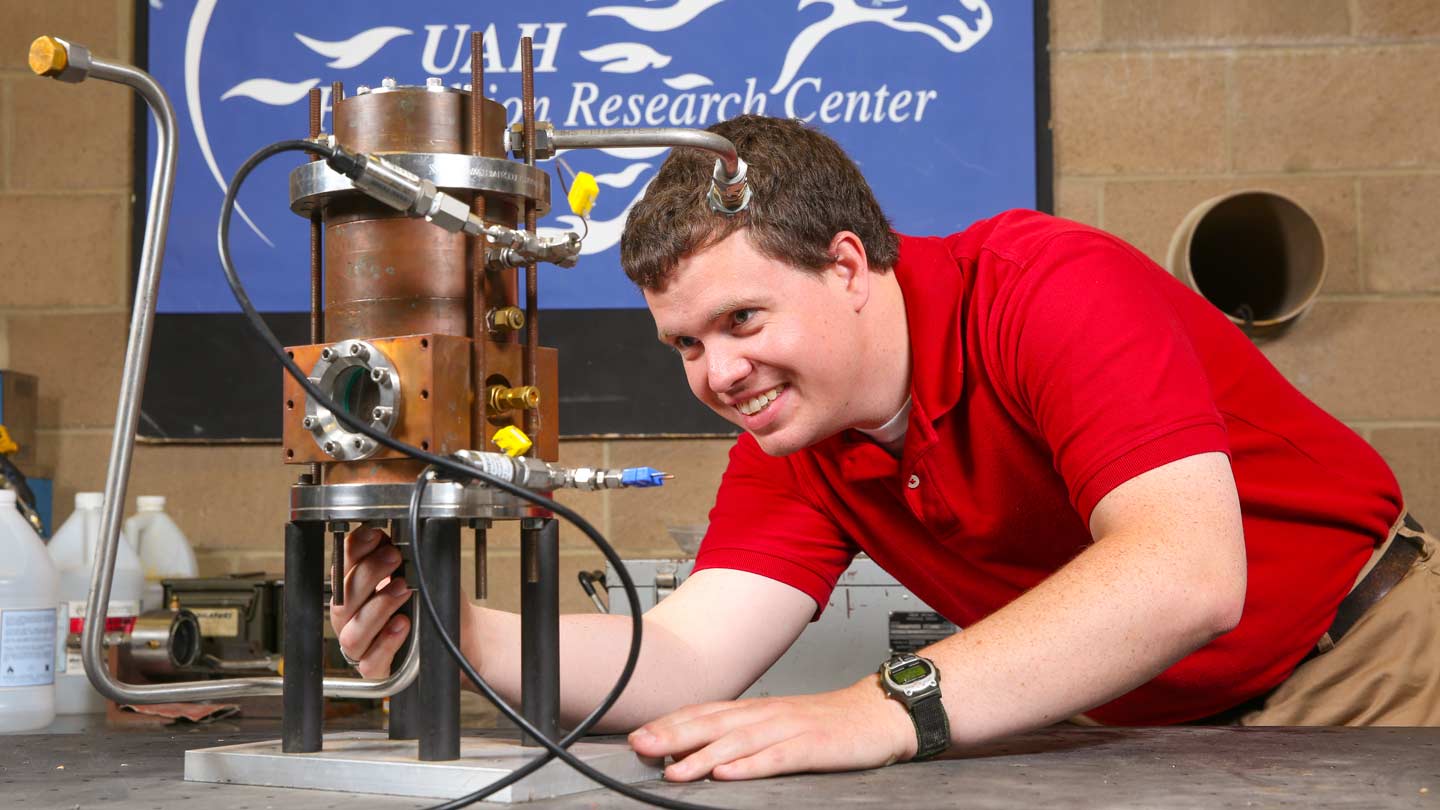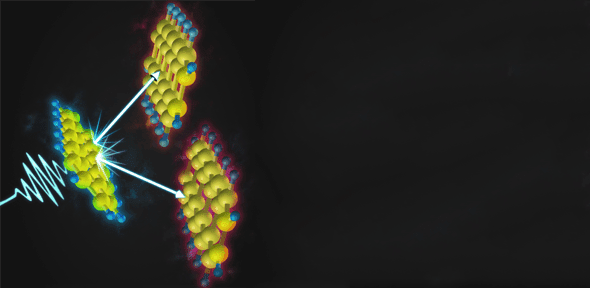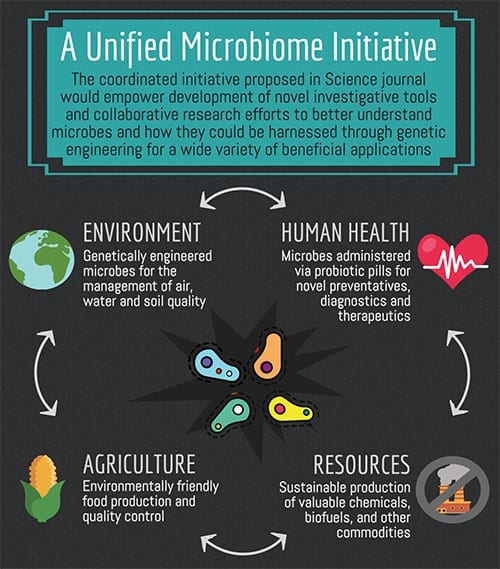
Hall thrusters are advanced electric rocket engines primarily used for station-keeping and attitude control of geosynchronous communication satellites and space probes.
Recently, the launch of two satellites based on an all-electric bus has marked the debut of a new era – one in which Hall thrusters could be used not just to adjust orbits, but to power the voyage as well. Consuming 100 million times less propellant or fuels than conventional chemical rockets, a Hall thruster is an attractive candidate for exploring Mars, asteroids and the edge of the solar system. By saving fuel the thruster could leave room for spacecraft and send a large amount of cargo in support of space missions. However, the current lifespan of Hall thrusters, which is around 10,000 operation hours, is too short for most space explorations, which require at least 50,000 operation hours.
To prolong the lifespan of Hall thrusters, a team of researchers from the French National Center for Scientific Research have experimentally optimized the operation of a novel, wall-less thruster prototype developed a year ago by the same team. The preliminary performance results were satisfactory, the team said, and pave the way toward developing a high-efficiency wall-less Hall thruster suitable for long-duration, deep space missions. The researchers present their work in a paper published this week in the journal Applied Physics Letters, from AIP Publishing.
Hall thrusters are electric rocket engines using a super high speed (on the order of 45,000 mph) stream of plasma to push spacecraft forward. Their operating principle relies on the creation of a low-pressure quasi-neutral plasma discharge in a crossed magnetic and electric field configuration. The propellant gas, typically xenon, is ionized by electrons trapped in the magnetic field.
In the conventional Hall thruster configuration, the magnetized discharge is confined to an annular dielectric cavity with the anode at one end, where the gas is injected, and an external cathode injecting electrons. Ionization of the propellant gas occurs inside the cavity, with ions accelerated by the electric field that stretches from the interior to the exterior of the cavity.
“The major drawback of Hall thrusters is that the discharge channel wall materials largely determine the discharge properties, and consequently, the performance level and the operational time,” said Julien Vaudolon, the primary researcher in the Electric Propulsion team led by Professor Stéphane Mazouffre in the ICARE-CNRS Laboratory, France.
Vaudolon explained that the wall materials play a role in the plasma properties mainly through secondary electron emission, a phenomenon where high-energy ions hit the channel wall surface and induce the emission of secondary electrons. Additionally, the erosion of the discharge cavity walls due to bombardment of high-energy ions shortens the thruster’s lifetime.
“Thus, an effective approach to avoid the interaction between the plasma and the discharge channel wall is to move the ionization and acceleration regions outside the cavity, which is an unconventional design named a Wall-Less Hall Thruster,” Vaudolon said.
Last year, the team developed a small-scale, wall-less thruster prototype based on a classical Hall thruster. At first the researchers simply moved the anode to the channel exhaust plane. However, this first wall-less thruster turned out to be a low-performance device, as the magnetic field lines are perpendicular to the thruster axis, which cross the anode placed at the channel exhaust plane.
“Magnetic fields are used to trap hot electrons injected from the external cathode and prevent them from reaching the anode,” Vaudolon said. “Basically an electron travels along the magnetic field line. If the magnetic field lines cross the anode, a large portion of hot electrons will be collected at the anode and won’t take part in the ionization of the xenon atoms, resulting in high discharge current, low ionization degree, and consequently, low performance level.”
To optimize the wall-less prototype and make the magnetic lines avoid the anode surface, the team rotated the magnetic barrier by 90 degrees, so that it injected the magnetic field lines parallel with the axial direction. The anode was still placed at the channel exhaust plane, but its shape is curved to avoid any interaction with the magnetic field lines.
Based on the PPS-Flex, a 1.5 kilowatts class thruster designed by the GREM3 Team at LAPLACE Laboratory, France and capable of modifying the magnetic field topology over a broad range of configurations, the team has validated their optimization strategies by modifying several parts and parameters of the thruster. The measurement of some operation parameters such as the thrust level, anode efficiency and far-field ion properties displayed a satisfactory performance level. However, Vaudolon said, some further optimization is still needed for the thruster’s efficient operation at high power.
“The wall-less thruster allows scientists to observe regions of the plasma previously hidden behind the channel walls. Now the plasma region can be observed and diagnosed using probes and/or laser diagnostic tools,” Vaudolon said. He also pointed out that the access to key regions of the plasma facilitates a thorough investigation of plasma instability and small-scale turbulence for a better understanding of the discharge physics and anomalous electron transport.
“Despite decades of research, the physics of Hall thrusters is still far from being understood, and the device characterization methods still rely on trials and testing, leading to expensive efforts,” Vaudolon said. “The major difficulty in developing predictive simulations lies in modeling the interaction between plasma and wall. The wall-less design would be an effective solution, potentially making future predictive simulations feasible and reliable.”
Read more: Wall-less Hall thruster may power future deep space missions
The Latest on: Wall-less Hall thruster
[google_news title=”” keyword=”Wall-less Hall thruster” num_posts=”10″ blurb_length=”0″ show_thumb=”left”]
via Google News
The Latest on: Wall-less Hall thruster
- Pompeii’s Newly Unearthed Banquet Hall Is a Wonderon April 16, 2024 at 4:19 pm
Ancient Pompeii has never ceased to astonish. During one of the very earliest excavations there, in 1772, participants were stunned by the impressions left in the hard debris by the bodies of ...
- Reporter, The Wall Street Journalon April 9, 2024 at 2:54 am
Julie Wernau writes about health and medicine across the U.S. for The Wall Street Journal's health and science bureau in New York. She tends toward stories that reveal the on-the-ground impact of ...
- Warning after wall collapses outside hallon April 2, 2024 at 4:59 pm
A section of wall below a Devon village hall has collapsed and remains "unstable", a council says. Dittisham Parish Council said on Facebook, external on Wednesday that part of the wall on The ...
- Pro Football Hall of Fameon August 3, 2022 at 8:12 am
The site navigation utilizes arrow, enter, escape, and space bar key commands. Left and right arrows move across top level links and expand / close menus in sub levels. Up and Down arrows will open ...
- 19 Ideas for Storing Clothes Without a Closeton May 24, 2021 at 5:00 pm
You can find armoires in a range of sizes and finishes to match your space and style. Basically, a wall-less portable closet, a freestanding closet system offers all the storage of a clothes ...
- The two hypotheses on the origin of eukaryotes.on August 22, 2020 at 6:23 pm
The irregular gray shape denotes a putative wall-less archaeon that could have been the host of the alpha-proteobacterial endosymbiont, whereas the oblong red shape denotes a typical archaeon with ...
- L. Brad Kingon August 12, 2020 at 8:20 pm
Dr. King is an experimentalist interested in studying electric space propulsion systems, including Hall-effect thrusters, ion engines, and arcjets. By utilizing strong electromagnetic forces to ...
- Is Wall Street Becoming Less Worried About The American Pay Raise?on February 26, 2018 at 3:04 pm
Not a huge one, of course, but a wage increase means inflation and that means higher interest rates, which does spook Wall Street ... of the lows under 2,600 is less likely," Chaikin says.
- Sports Hall of Fame Wall in storageon September 10, 2014 at 5:00 pm
less expensive site, the wall will be kept in storage,” Chang said. The Big Island Sports Hall of Fame was founded in the late 1990s by the late Jack Matsui, to honor those who have positively ...
via Bing News










